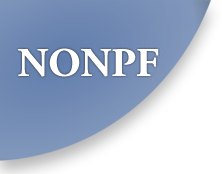Utilization of a Conceptual Framework to Teach Diagnostic Reasoning to NP Students
Diagnostic reasoning is the complex cognitive process used by clinicians from many health care disciplines to ascertain a correct diagnosis and therefore prescribe appropriate treatment for patients. Knowledge, experience, and the context in which the clinician finds himself or herself underlie data
acquisition, the first step in diagnostic reasoning. Diagnostic reasoning involves two processes: one is more intuitive, more a gestalt coupled with “skilled know-how” that can guide further history-taking. The other process is more logical and analytical and is reflected by a learner’s ability to synthesize the data and generate hypotheses. Our application of a conceptual framework was heavily influenced by the work of Tanner [4] Bowen [1], and Croskerry [2]
Tanner’s [4] model was developed from the literature to illustrate the collective research finding on how nurses think and
develop clinical judgment. This Presentation offers a conceptual model for teaching diagnostic reason coupled with actual educational interventions used in teaching Adult Acute Care Nurse Practitioner (ACNP) students while transitioned over time from a live classroom curriculum to a distance accessible program. Isses in teaching diagnostic reasoning to begining NP students will be explored in this session.

